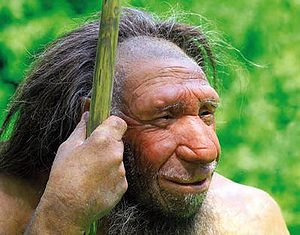Was there an interaction between Homo sapiens and Homo neanderthalensis – better known as Neanderthals?
It is a long-standing question that has had scientists baffled for years. Only months ago scientists reported that there was a definitive genetic connection between modern humans and Neanderthals of the past. However, there are now studies showing that perhaps the interbreeding of these two species of humans is not necessarily the reason some people of European and Asian descent have 1-4% DNA in common with our ancient humans. The reason, the new studies claim, actually stems from a shared common ancestor, not interbreeding – also called hybridisation. There have even been studies previously that indicated any hybridisation of H. sapiens and H. neanderthalensis would have resulted in less than a 2% chance of producing offspring.
The University of Cambridge scientists say that this common ancestor lived roughly half a million years ago across Africa and Europe. The two continental ranges of this descendant slowly separated 350-300,000 years ago with the European humans evolving into Homo neanderthalensis and the African humans becoming Homo sapiens. When the H. sapiens of Africa made their way into Europe 60-70,000 years ago, living alongside H. neanderthalensis, the two species already shared common genetics. There was no need for hybridisation to account for the shared DNA. Previous studies have the split of the African and European ranges, but then have modern humans interbreeding with H. neanderthalensis on their arrival into Europe. Andrea Manica, lead researcher from Cambridge, stated, “Our work shows clearly that the patterns currently seen in the Neanderthal genome are not exceptional, and are in line with our expectations of what we would see without hybridisation. So, if any hybridisation happened – it’s difficult to conclusively prove it never happened – then it would have been minimal and much less than what people are claiming now.”
This new study was funded by the BBSRC and Leverhulme Trust, performed by scientists at the University of Cambridge, and published August 13th in the Proceedings of the National Academy of Sciences.










